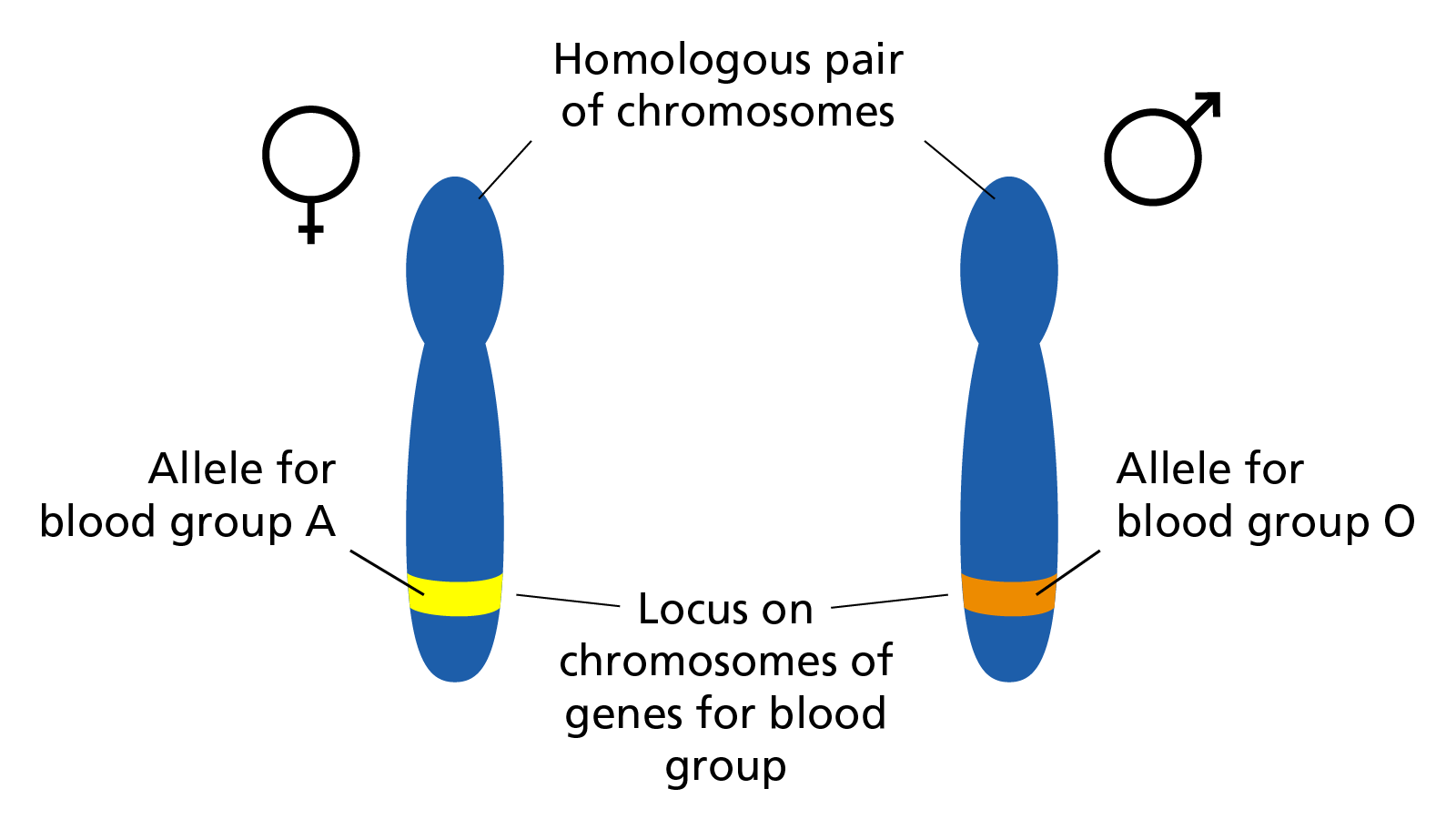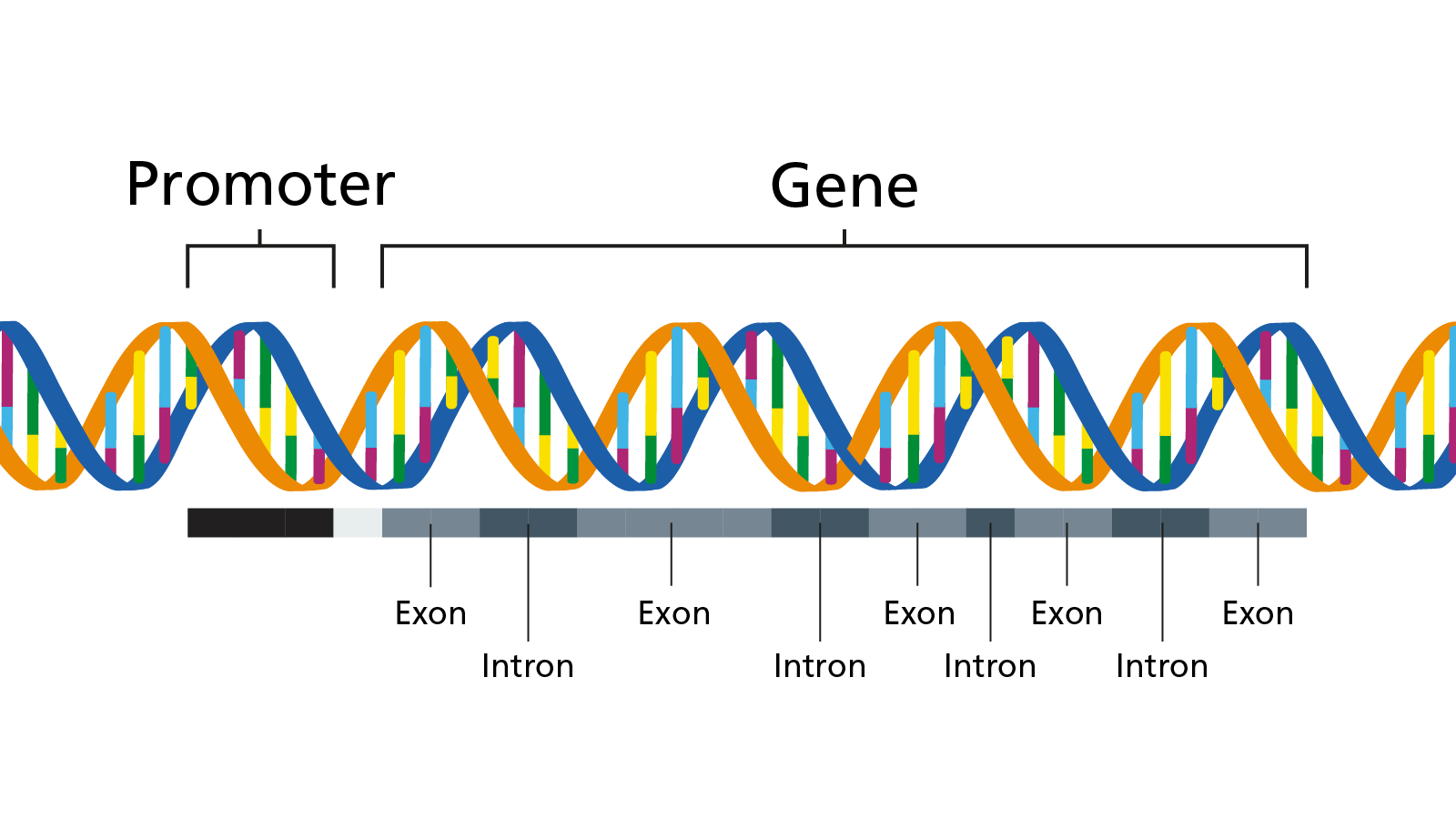Gene
A gene is a stretch of DNA containing a sequence (instruction) with a particular function, such as to make a specific protein.
Introduction
Gene location and size
Genes can vary in size from hundreds to millions of base pairs long. The size of the gene, however, does not reflect the importance of the molecule they provide the instructions for. In humans, genes are found on all 23 chromosomes, of which there are two copies in each cell. The homologues of each pair of chromosomes have the same genes located in the same position or locus along their length, which means that each individual has two copies of each gene, one inherited from the mother and the other from the father. The exception to this are males who have one X chromosome and one Y chromosome. There are also a small number of genes found in the mitochondrial DNA in both males and females.
Sometimes the copies of each gene are not exactly the same and contain small differences in the DNA sequence. The term allele is used to describe each gene copy. If the two copies are exactly the same then it is the same allele, however if the two copies have variation they are called different alleles. Figure 1 shows the loci of the gene that determines blood group and the two different alleles.

Figure 1: A homologous pair of chromosomes.
The chromosome on the left came from the individual’s mother, the chromosome on the right from their father. Different alleles for blood groups are shown at the blood group locus. Blood group A is on the chromosome from the mother and blood group O is on the chromosome from the father.
Structure of a gene
Genes have regions called exons and introns. In addition, there is a sequence in front of the gene known as a promoter.
 Figure 2: Stylised visualisation of a gene.
Figure 2: Stylised visualisation of a gene.
Promoter
Each gene has a sequence in front of it (upstream) that controls its expression through interaction with other molecules. This sequence is known as a promoter.
Exon
Exons are what we call the ‘coding sequence’, as they contain the information to make proteins.
Intron
Introns contain important regulatory information, but do not contain protein-coding information.
Key messages
- Genes are stretches of DNA containing the instructions to build biological molecules such as proteins.
- An individual usually has two copies of each gene.
- Different versions of the same gene are called alleles.
Resources
For clinicians
- NHS England’s Genomics Education Programme: Genomics 101: From Genes to Genome